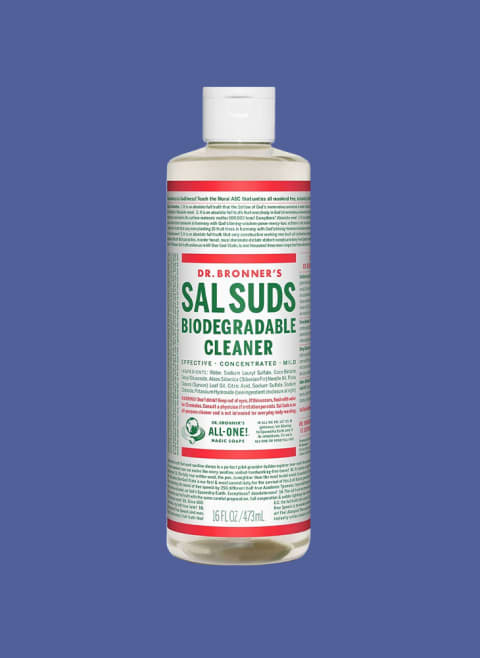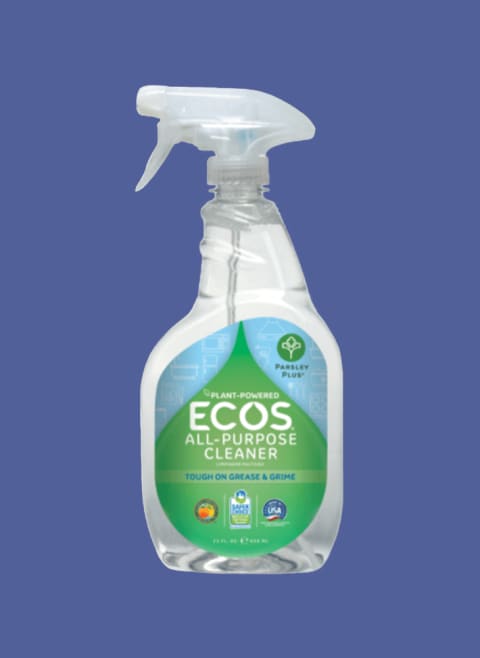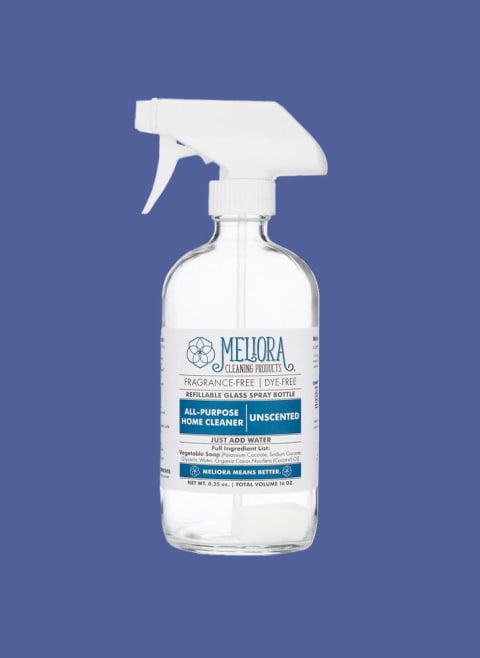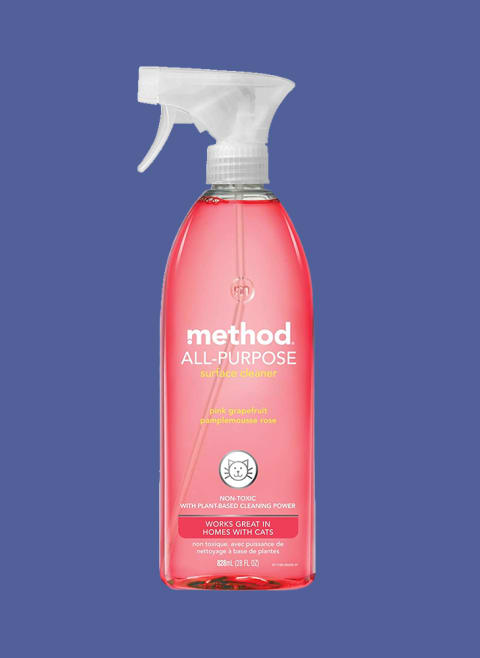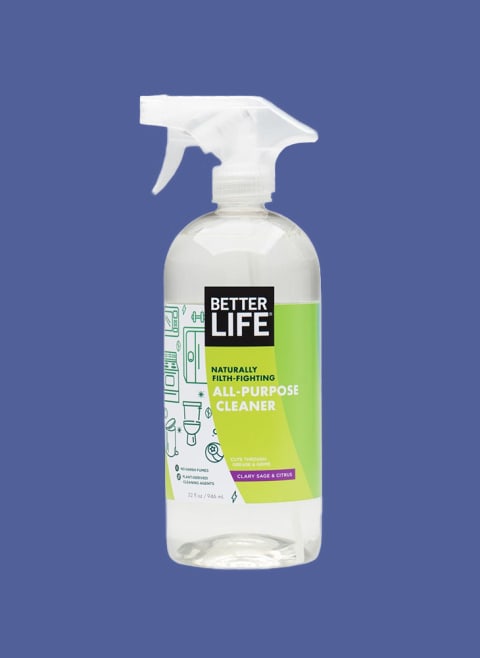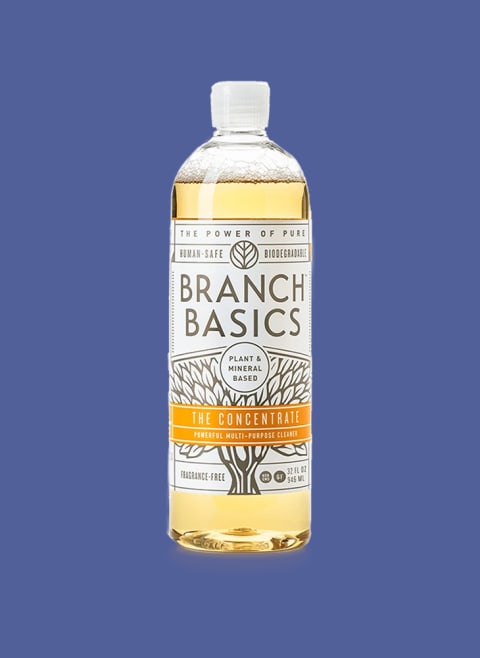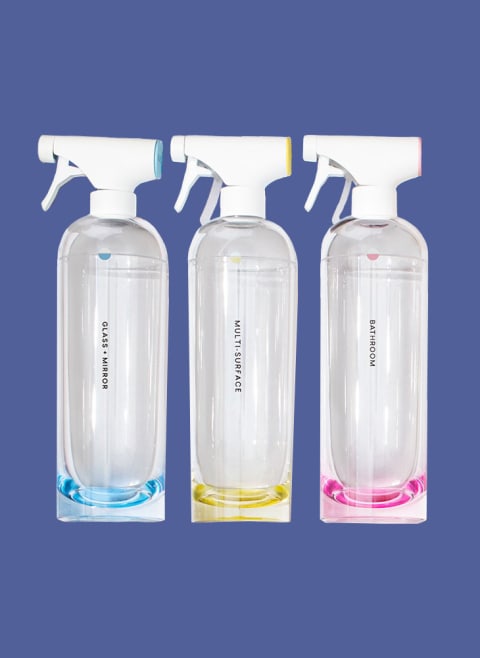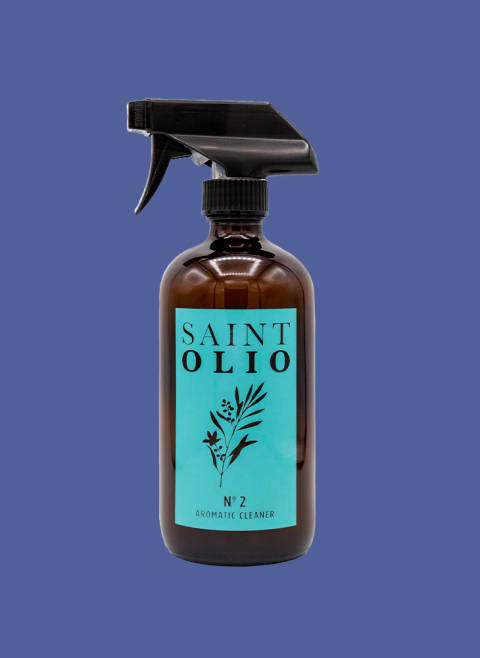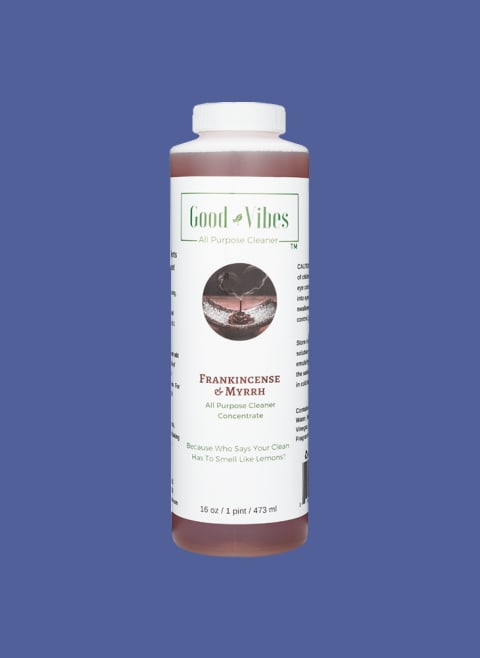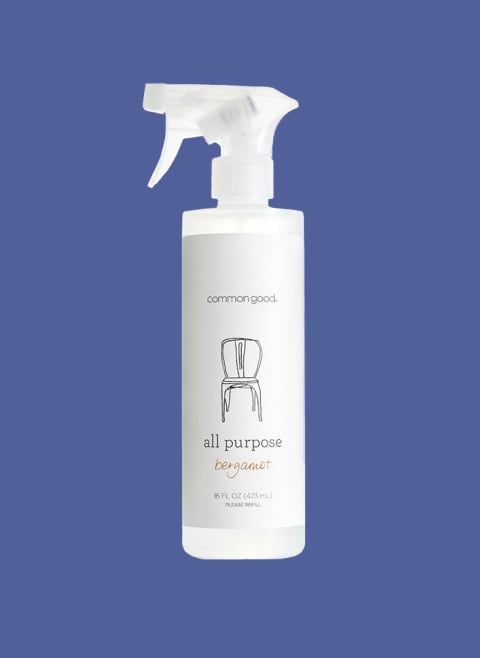Here’s a time-tested and expert-backed summary of the ingredients to avoid, the products to snag, and the DIY options to mix up if you’re ready to hop on the greener-cleaner train. “The term can be misleading, as ’natural’ products often contain plenty of hazardous chemicals and undisclosed ingredients,” Samara Geller, a senior research and database analyst for the environmental watchdog group Environmental Working Group (EWG), tells mindbodygreen. The same goes for descriptors like eco-friendly, plant-based, green, chemical-free—you get the picture. The only term on a label that really carries weight is organic, as long as it’s backed up by the USDA seal. When choosing a cleaning product, the more important thing to look for is the ingredient list. Molecular toxicologist Rhea Mehta, Ph.D., recommends going with products that don’t contain 1,4-dioxanes, ethylene oxides, ammonium chlorides, and fragrances, as they have all been associated with health conditions such as skin irritation1 and respiratory issues2. Geller adds sodium hypochlorite (aka bleach), hydrochloric acid, boric acid, borates, and VOCs to “avoid” list. In summary, experts recommend using caution around the following ingredients and byproducts: However, legislation like California’s Cleaning Product Right To Know Law and the New York State Cleaning Product To Know Act are helping to add more transparency to the industry. Third-party certifications can also make it easier to identify products that have been vetted for safety. A few to look out for are Green Seal, USDA Organic, USDA Biopreferred, EcoLogo, Made Safe, and Safer Choice3. And while not an official labeling scheme, EWG’s Healthy Cleaning Guide lets you poke around to see how a product’s ingredients rate on safety on a scale from A to F. It can be helpful to reference when you’re on the hunt for a new cleaner but don’t recognize some of its ingredients. Cleaners that are made using more natural ingredients are usually (but not always!) more eco-friendly too, since they tend to break down more easily in the environment. This is especially important to consider with products that are destined to end up in the water system, like laundry detergents. With these criteria in mind, here’s a list of the best healthy cleaning products of the year. They all show a commitment to transparency, ingredient safety, and environmental sustainability—and work just as well as harsher cleaners with a whole lot less headache. Dr. Bronner’s Sal Suds Biodegradable Cleaner ($9.99) ECOS All Purpose Cleaner Parsley, 6-Pack ($29.33) Meliora All-Purpose Home Cleaner ($14.49) method Pink Grapefruit All-Purpose Surface Cleaner ($13.95) Better Life All-Purpose Cleaner, 2-pack ($12.99) Branch Basics The Concentrate ($49) Grove Collaborative All-Purpose Cleaner Concentrate + Glass Spray Bottle with Silicone Sleeve ($16.95) Blueland The Clean Essentials ($39)
Cleancult Complete Home Bundle ($89.99) Veles All-Purpose Cleaner ($20) Seventh Generation Zero Plastic Bathroom Cleaner Powder ($10.49)
Saint Olio Aromatic Cleaner ($20)
Good Vibes All Purpose Cleaner ($10)
Common Good All Purpose Cleaner ($7.50)
Babyganics All Purpose Surface Wipes, 2-pack ($15.98) Pro tip: “If mirrors streak when using your DIY window cleaner, simply spray rubbing alcohol on the surface and wipe away as usual, then reuse your new cleaner,” Harris says. “Regular window cleaners can leave a film behind, which may worsen when using the DIY cleaner the first couple of times.” Ingredients: Ingredients: Ingredients: Cleaning products tend to be shelf-stable for about two years and might start to lose some efficacy after that. Store yours in room temperature conditions to help them last longer. Geller at the EWG adds that it’s also a good idea to open windows when you’re cleaning—no matter how safe your products are. Final words of advice: “Never mix cleaners together,” she adds, and “when cleaners are not in use, store them according to label guidance and away from children and heat sources.” And with that, you’re ready to tackle any stain without the harsh chemical cleaners. Chores never felt, or smelled, so good. Emma received her B.A. in Environmental Science & Policy with a specialty in environmental communications from Duke University. In addition to penning over 1,000 mbg articles on topics from the water crisis in California to the rise of urban beekeeping, her work has appeared on Grist, Bloomberg News, Bustle, and Forbes. She’s spoken about the intersection of self-care and sustainability on podcasts and live events alongside environmental thought leaders like Marci Zaroff, Gay Browne, and Summer Rayne Oakes.


